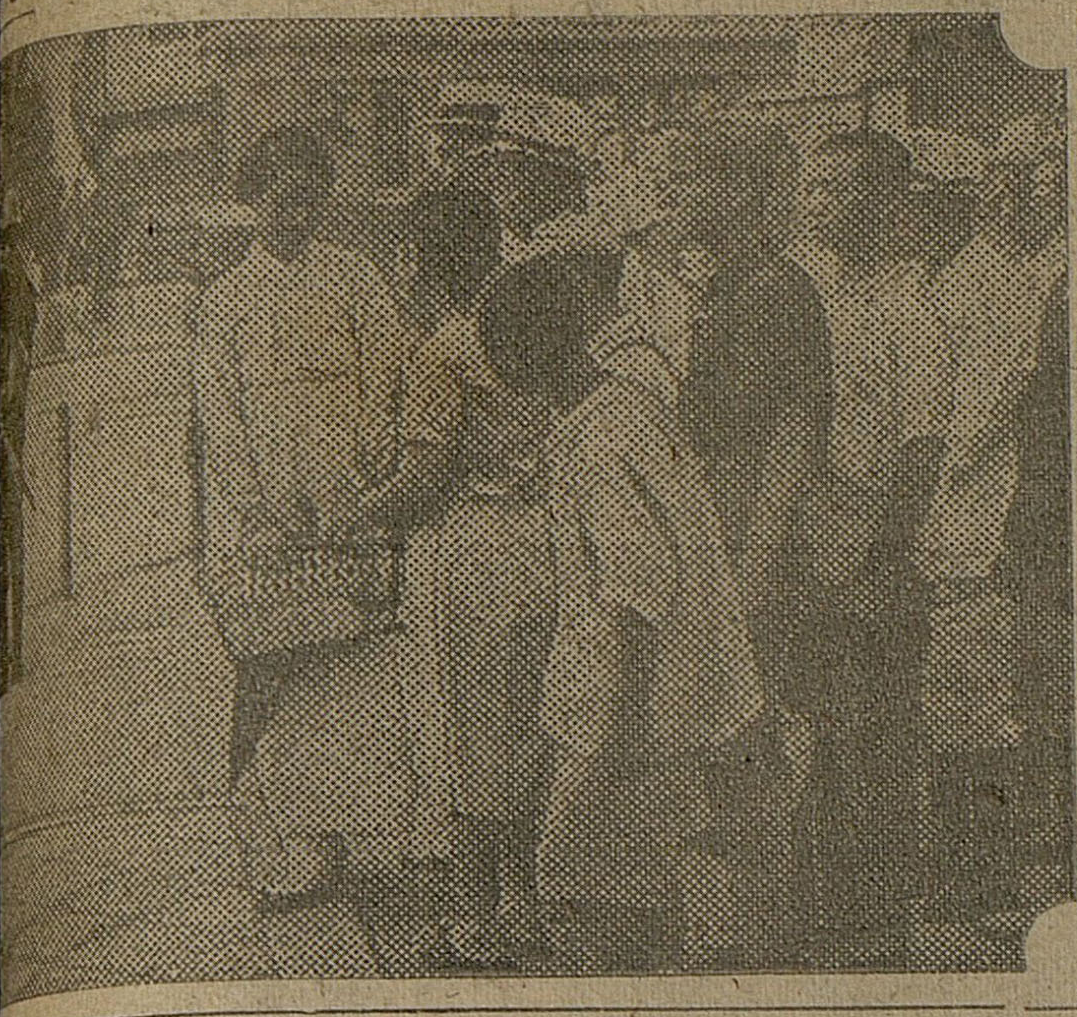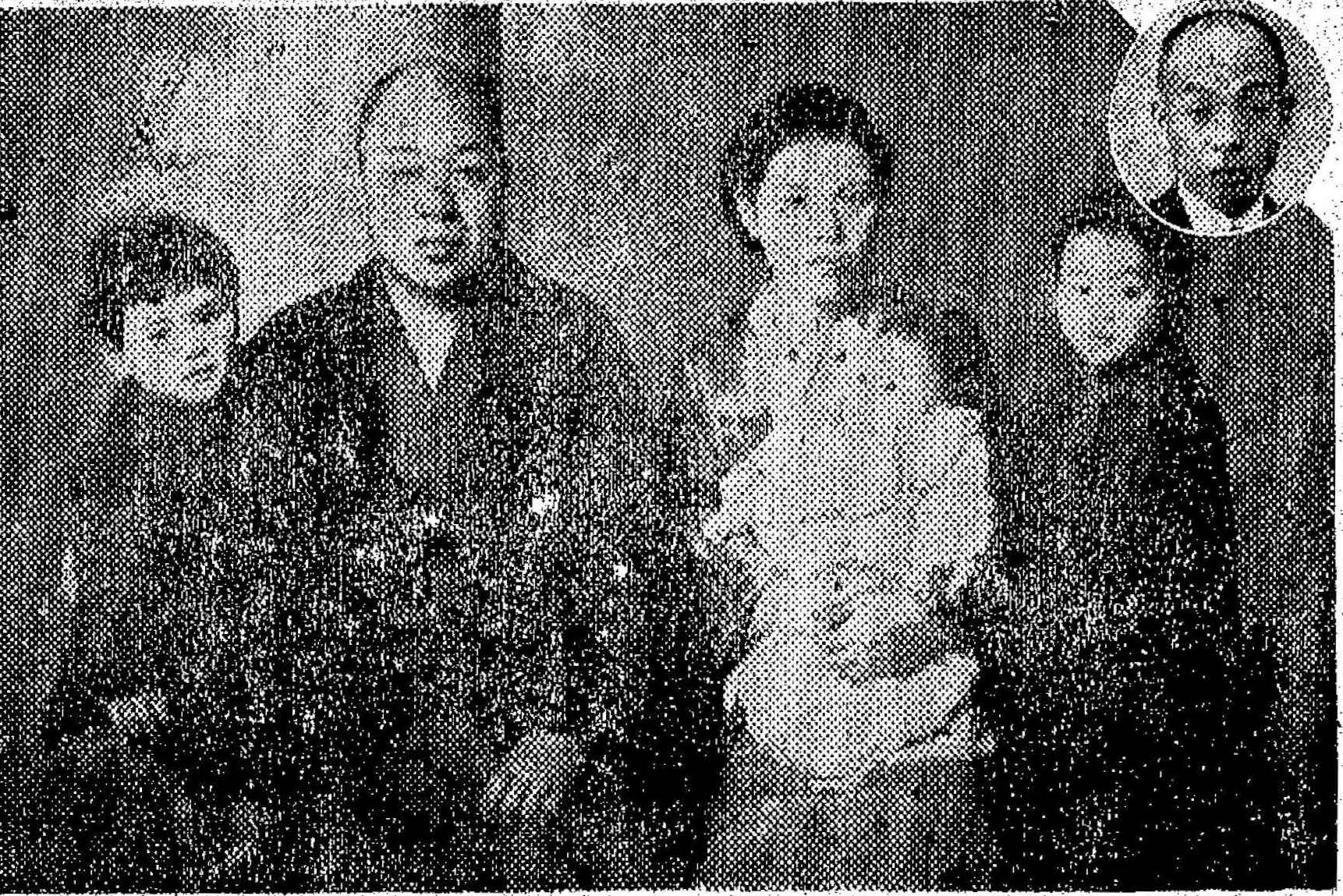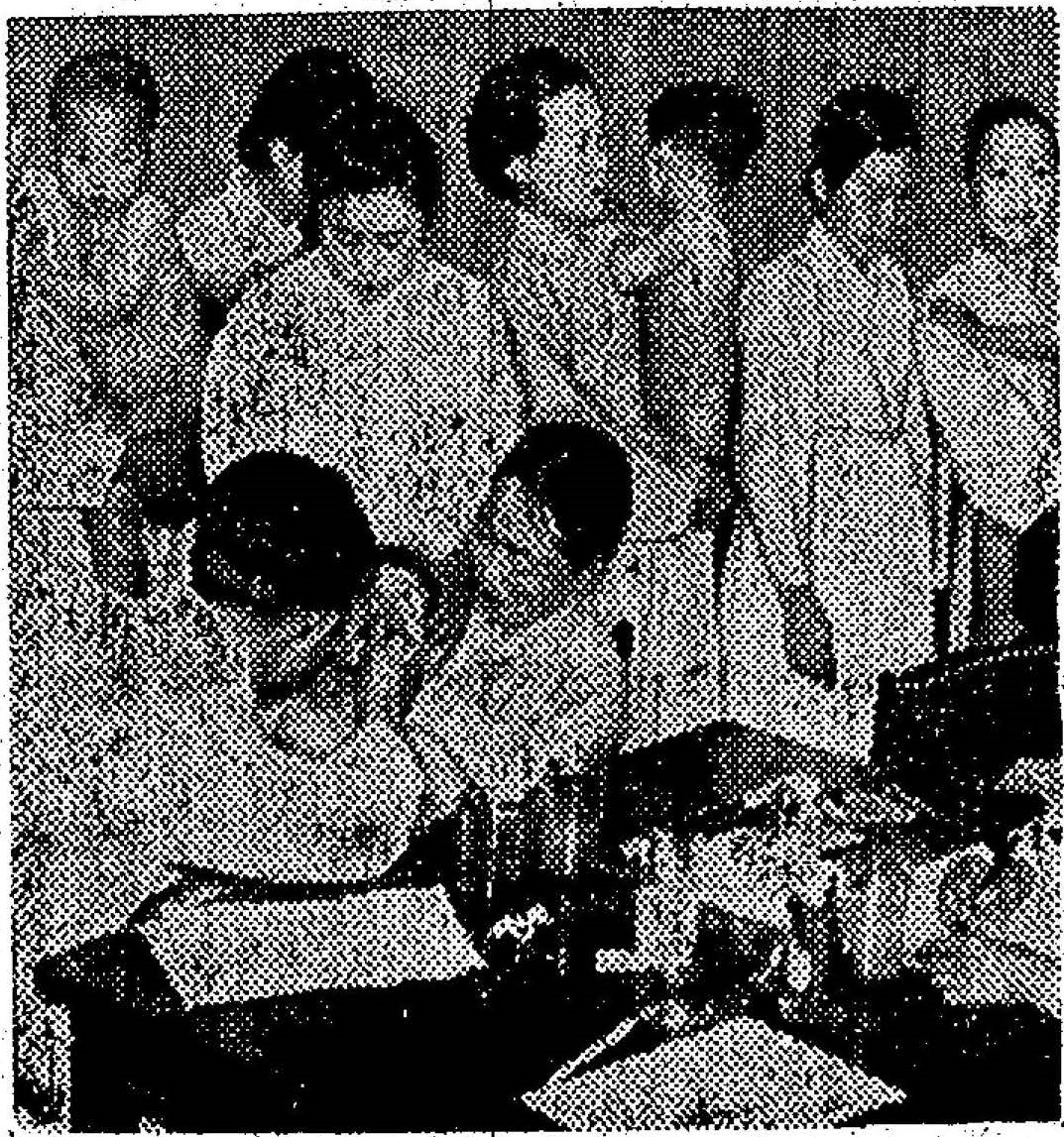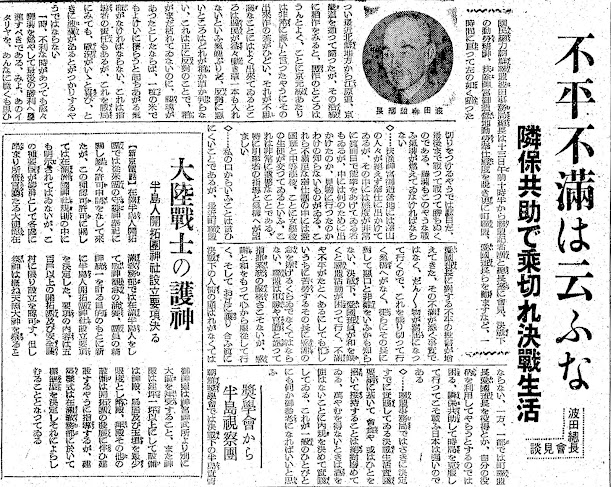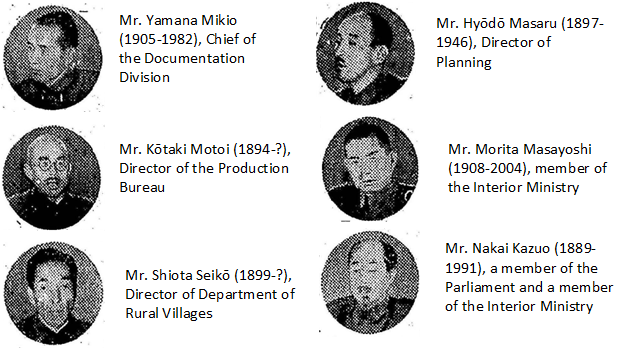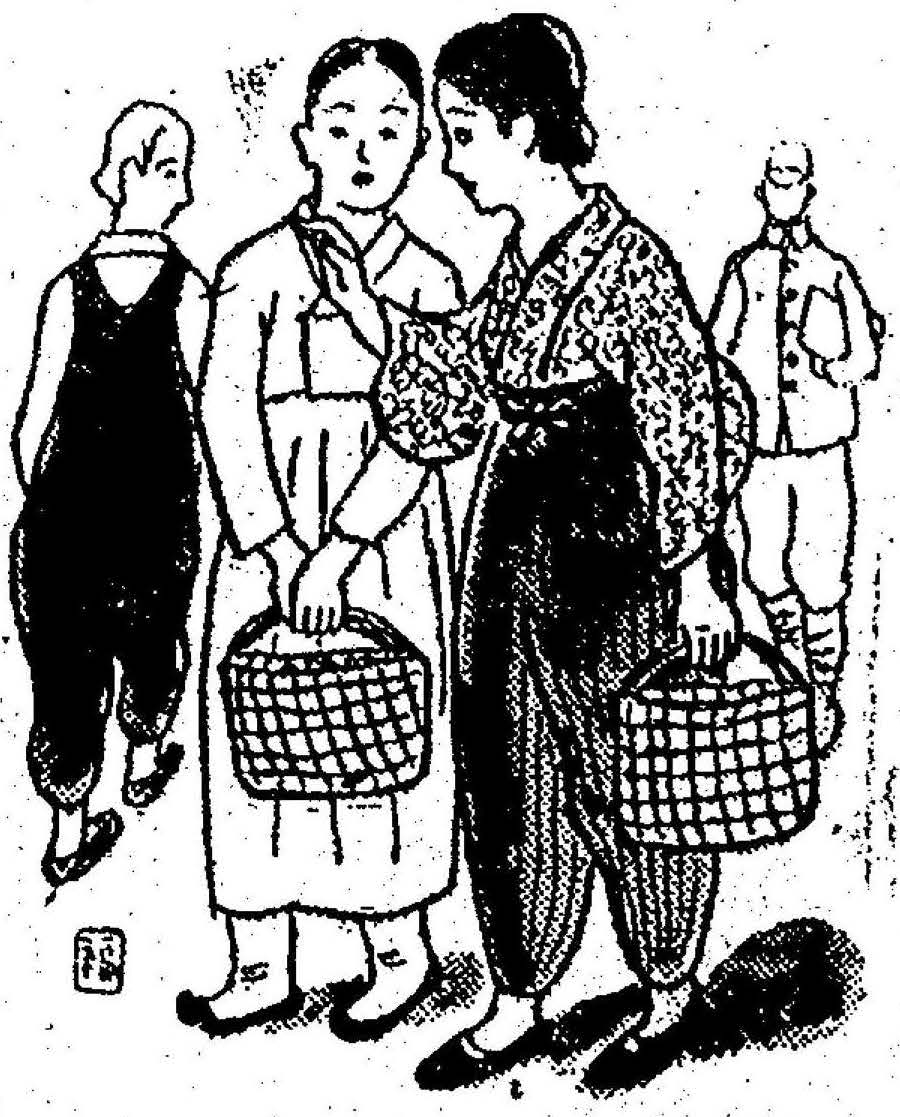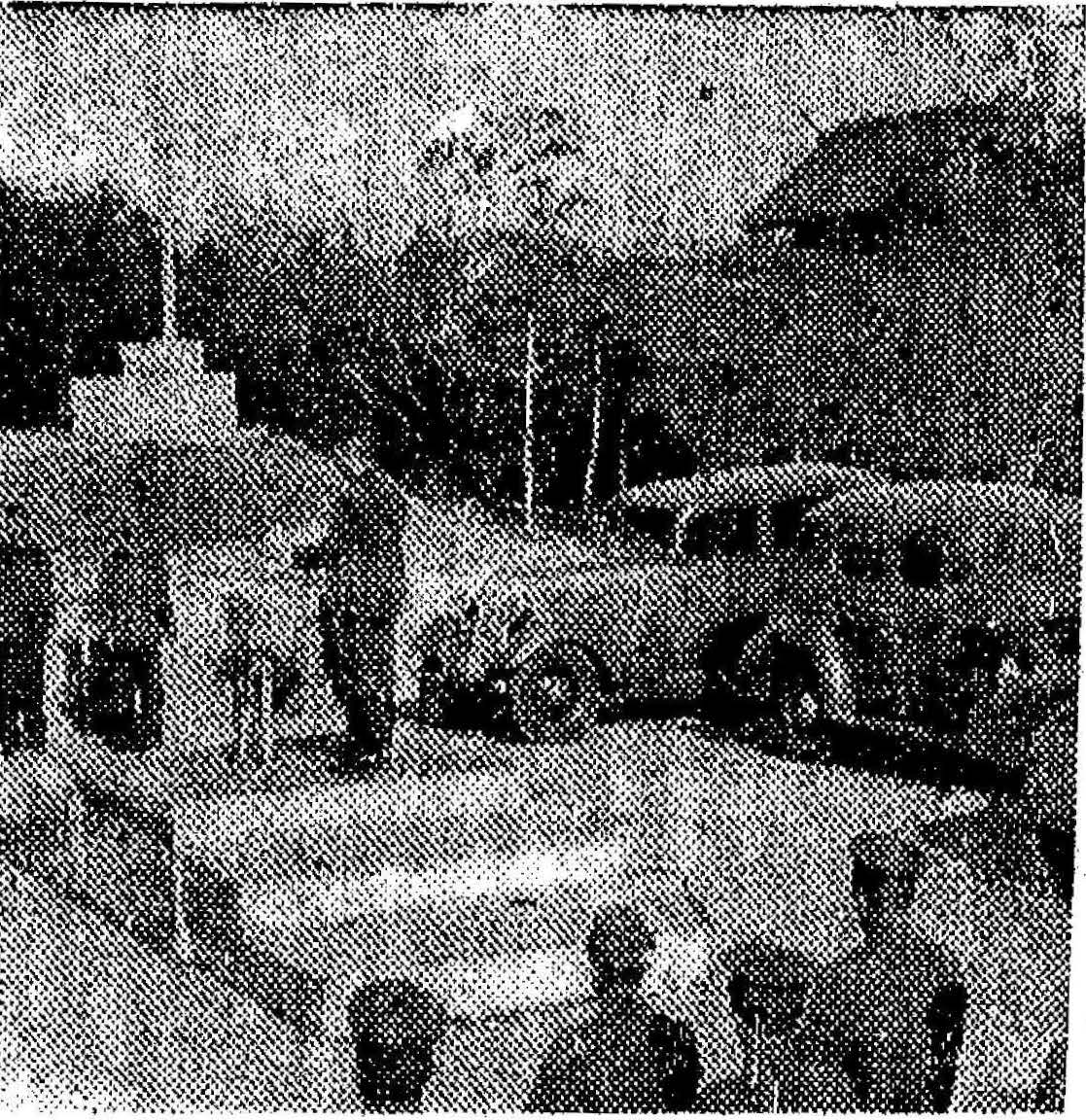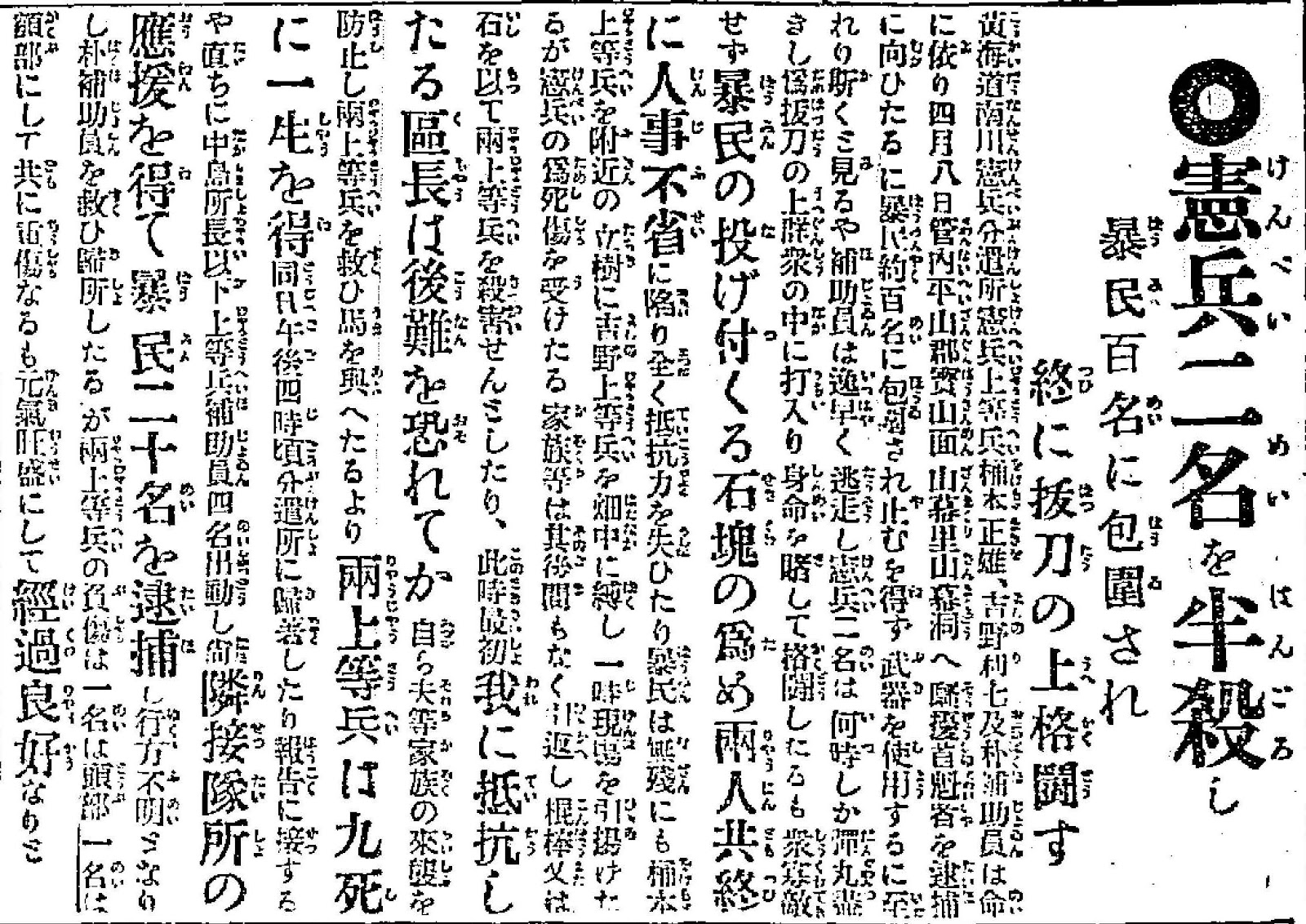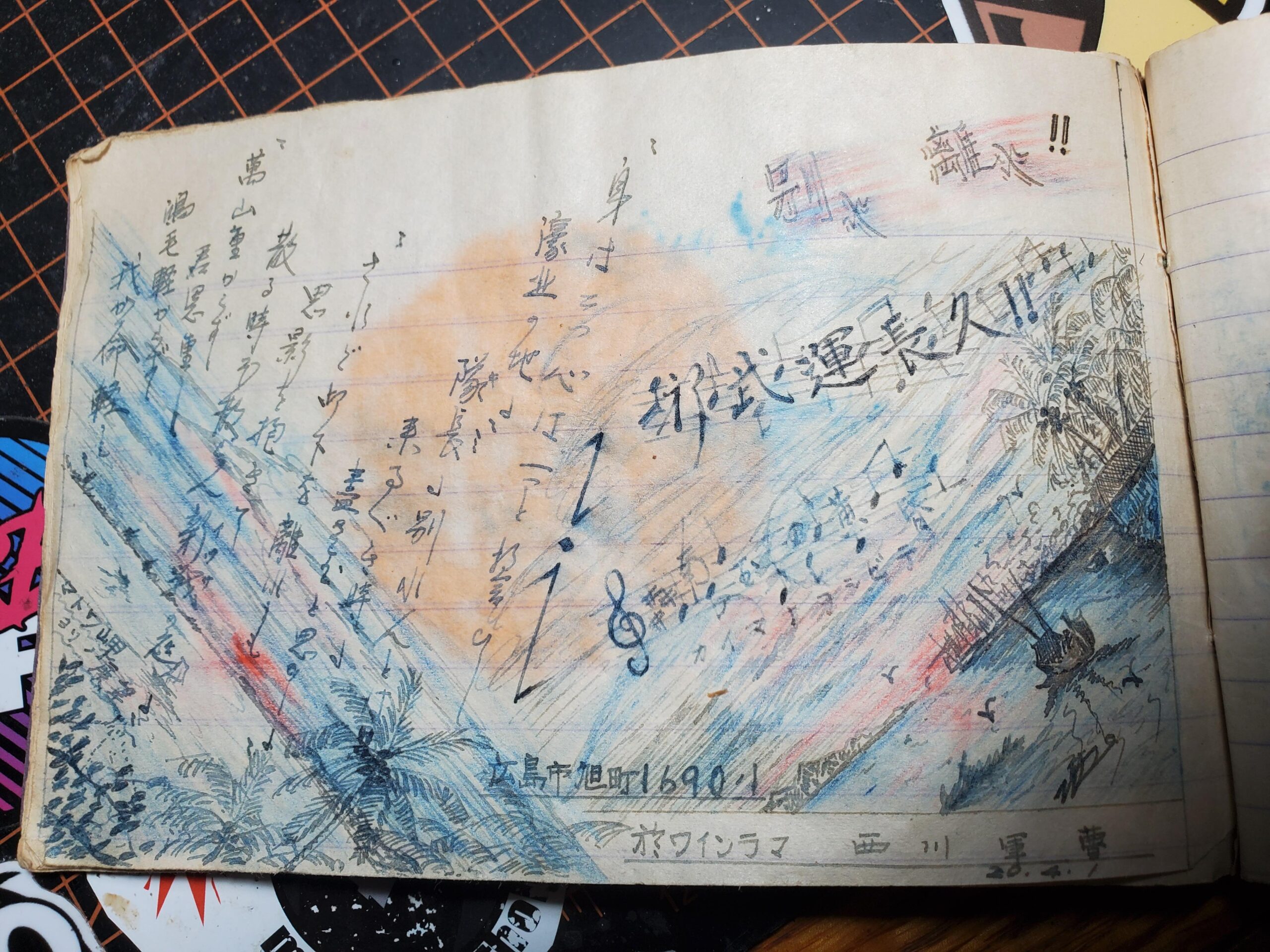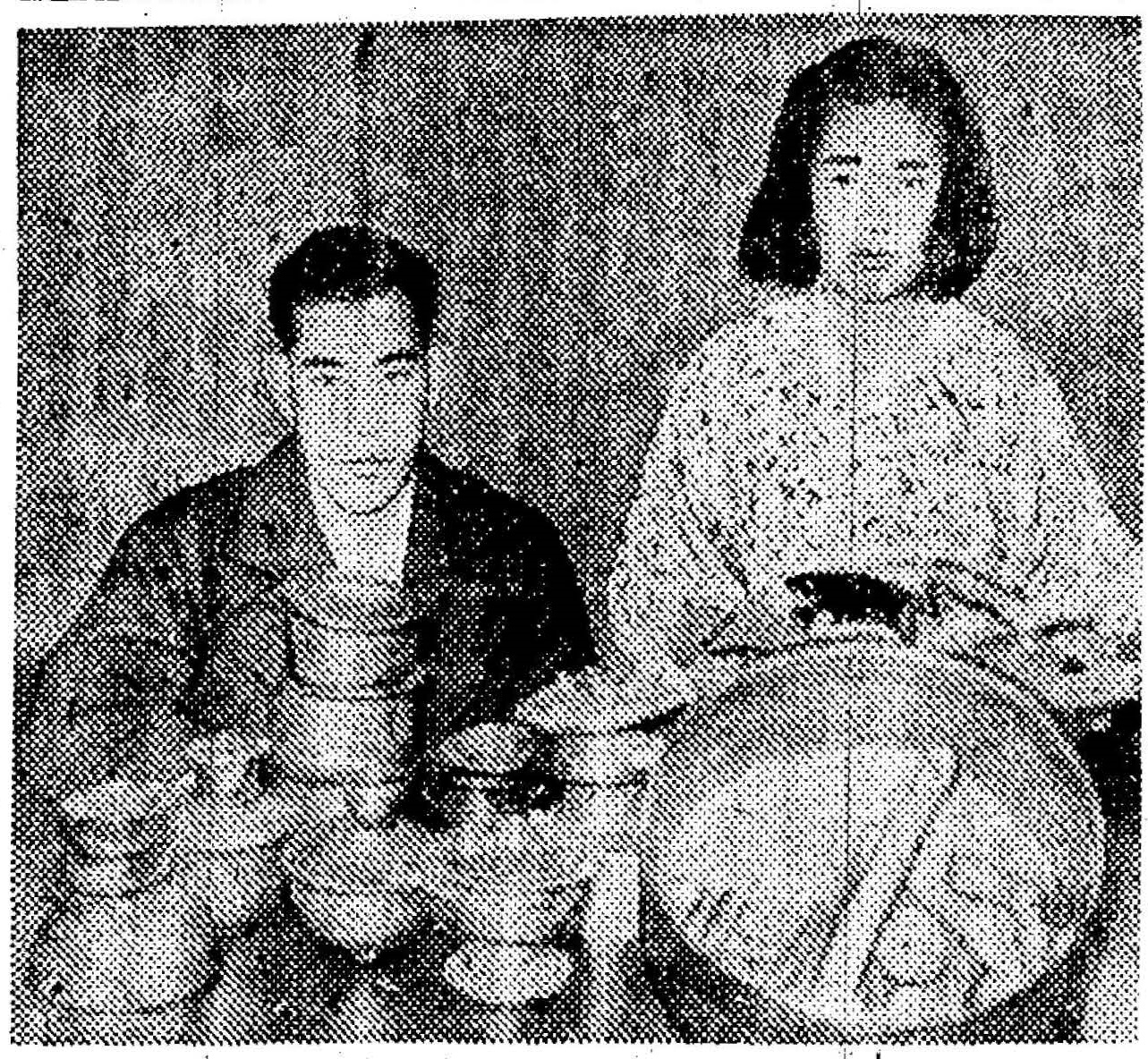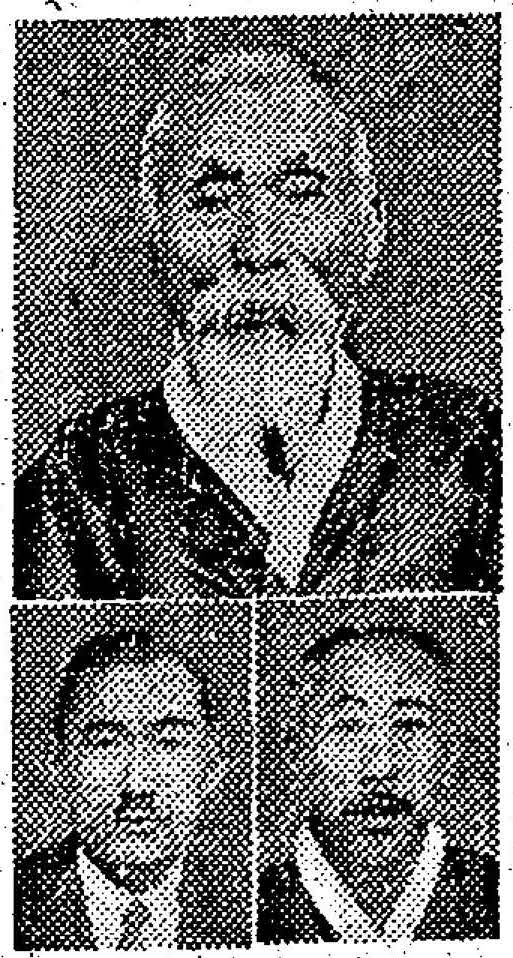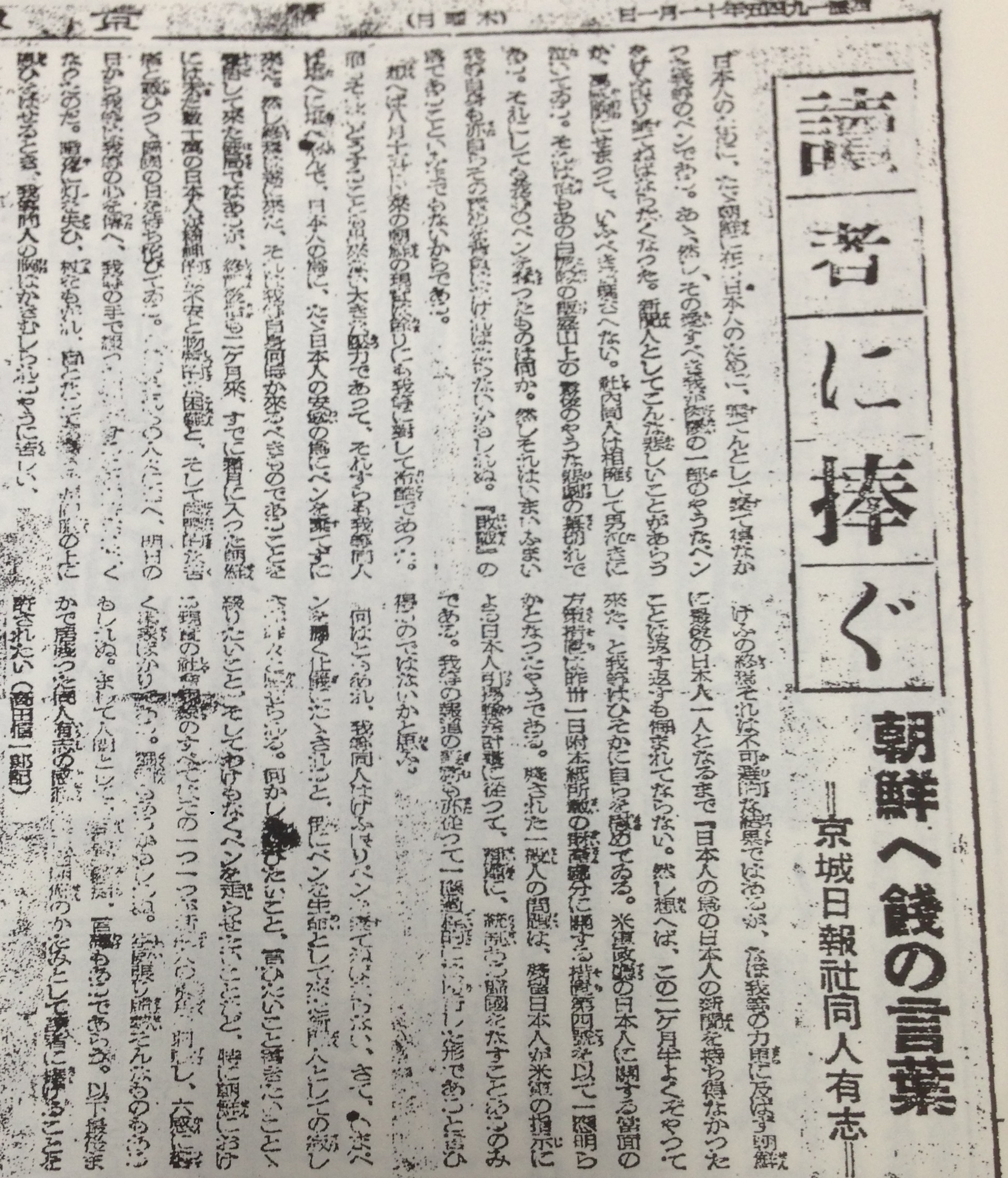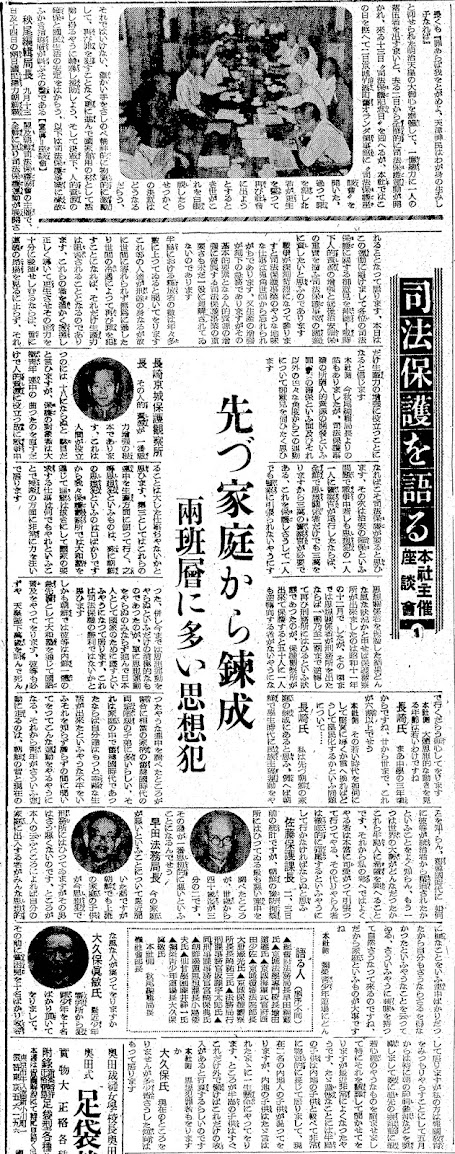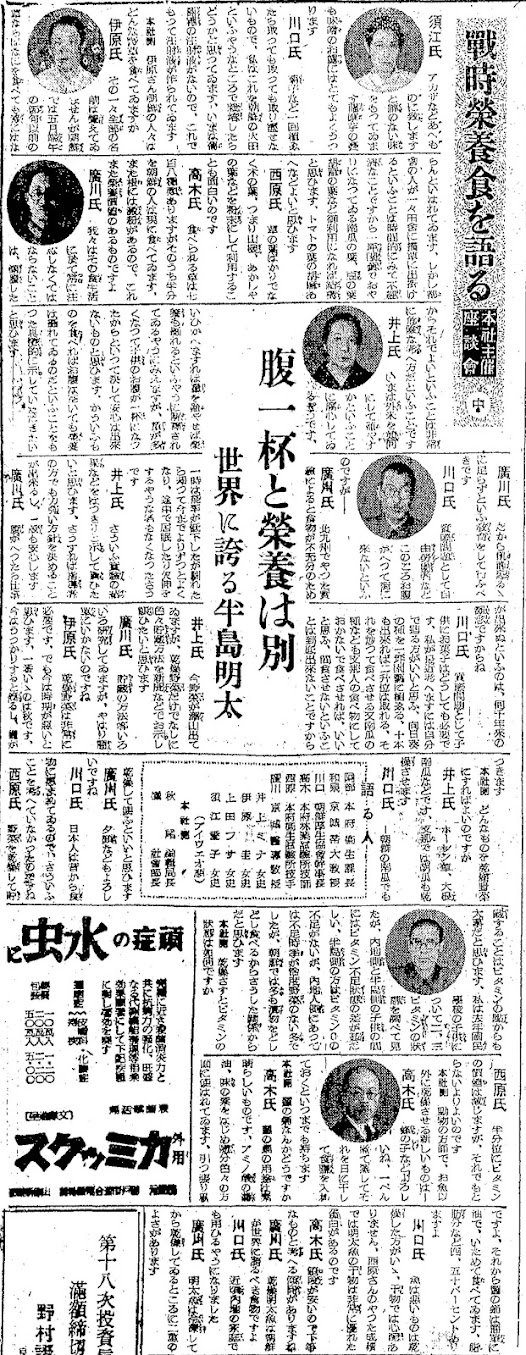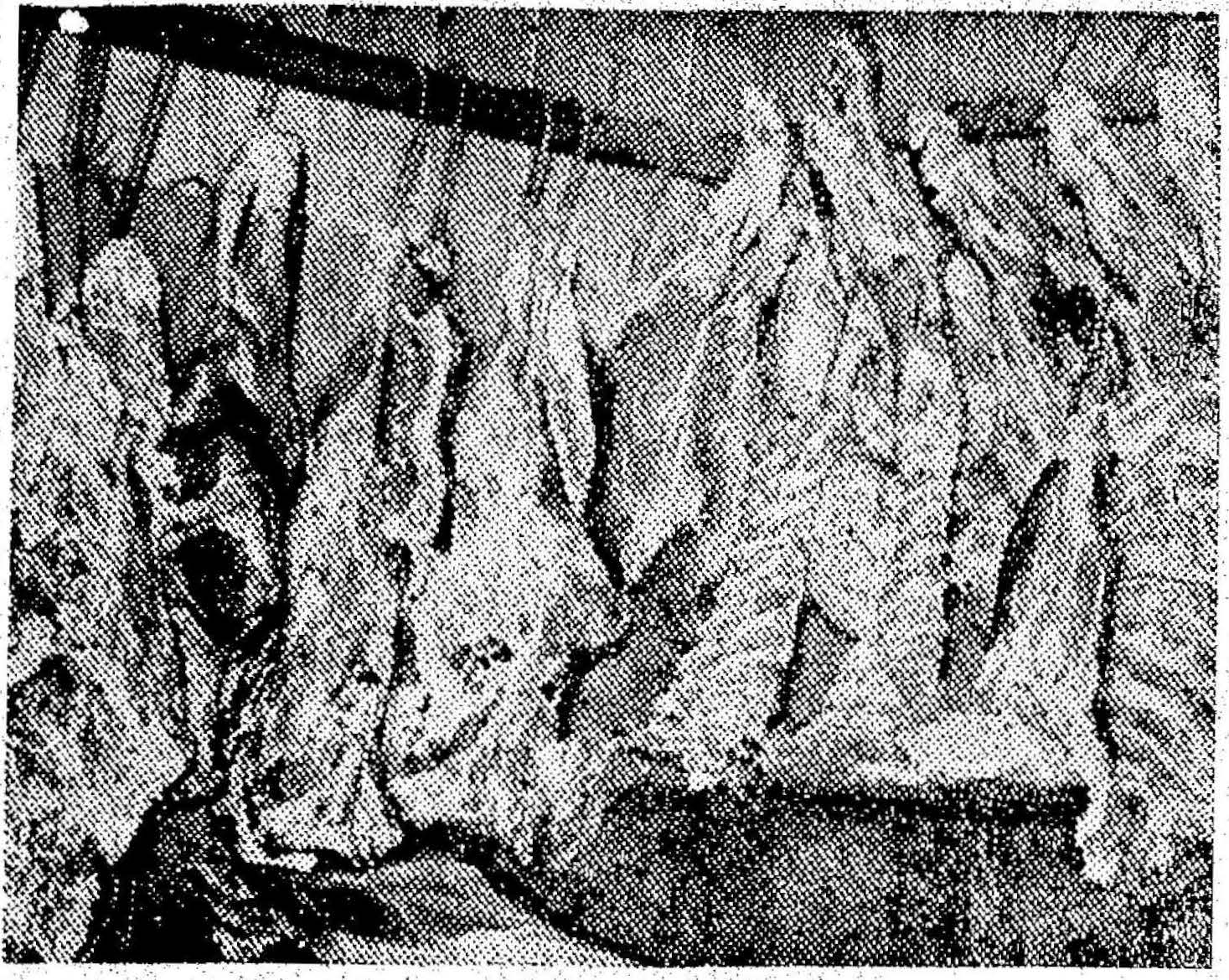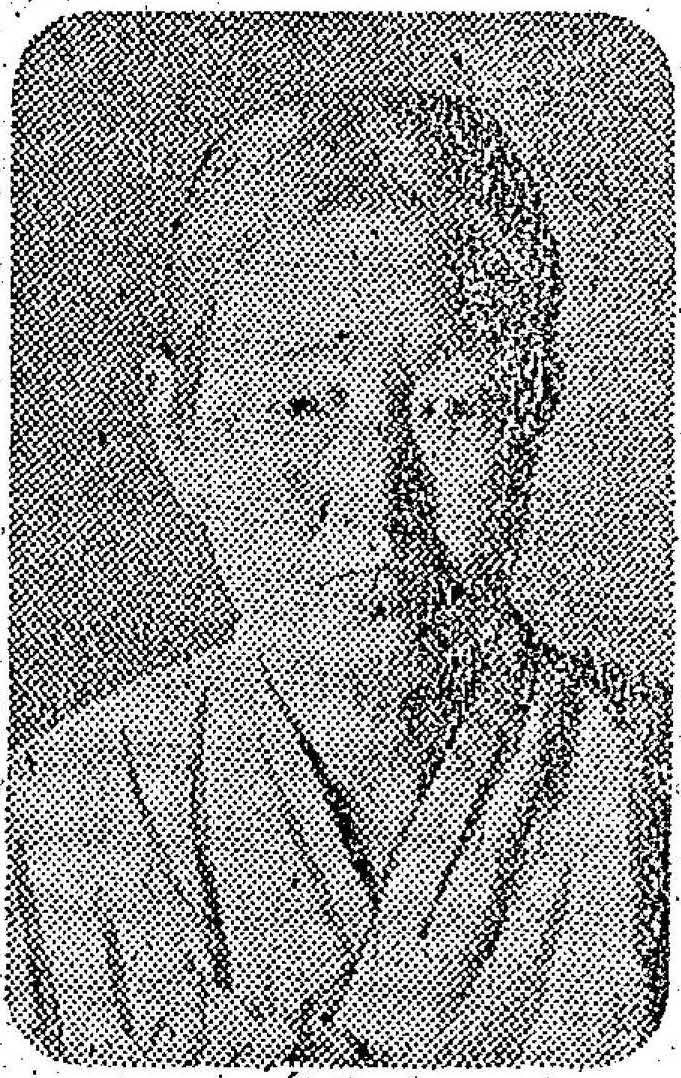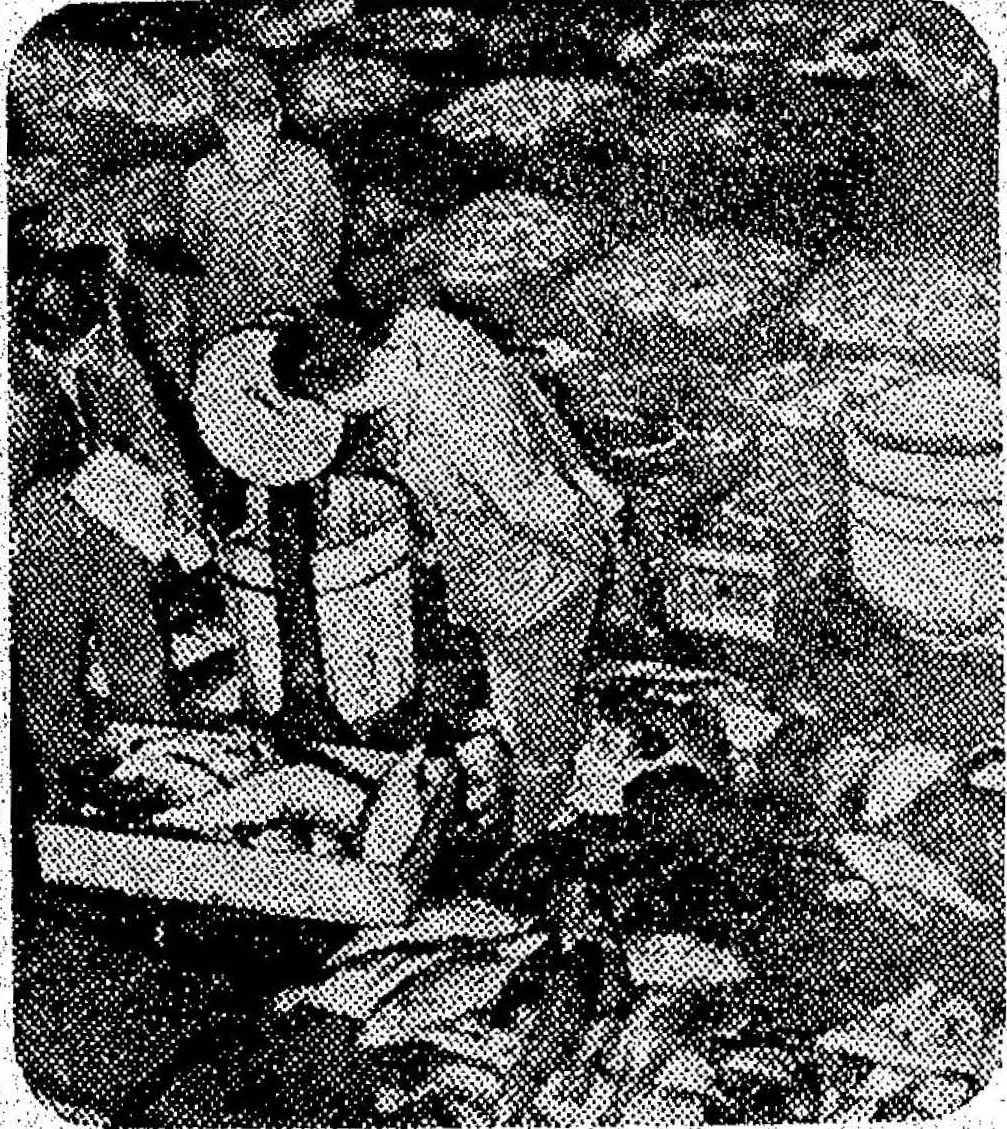
In November 1943, colonial authorities implemented a clumsy, inefficient fish rationing system in Seoul which led to large spoilage losses, a measly fish quota of less than 750 grams a day per person, angry complaints about irregular store hours, families were sometimes allotted poisonous fugu fish
This is my translation and transcription of a news article from Keijo Nippo, a propaganda newspaper and mouthpiece of the government of Japan-colonized Korea. It has never been republished or translated before, to the best of my knowledge. Ever since someone dumped these old newspaper issues in the Internet Archive last October, I have been slowly translating and posting select articles at various subreddits to share my findings with the wider community.
This article talks about fish shortages in Korea in December 1943, two years into an all-out war against the US. In response to widespread fish shortages and the proliferation of black markets, colonial authorities implemented a rationing system for seafood, where fish supplies were all supposed to be sold by fishermen to the colonial government at officially set prices, funneled into a centralized distribution point, and then distributed to non-households (including restaurants) and households, where each customer was allotted a measly fish quota of 750 grams per day.
However, the rationing system ran into problems as fish was very perishable, and supplies could often be irregular depending on the daily catch. Before rationing, fish was efficiently auctioned off at wholesale markets to middlemen who knew how much fish and what kinds of fish to buy. But, when the rationing system eliminated the middlemen, this prolonged the process of sorting and allocating the fish, since distribution was now done by workers who weren’t familiar with how much fish and what kinds of fish to pack, which led to increased spoilage, especially in the days before modern refrigeration. The ignorance of the workers also led to ridiculous situations were poisonous fugu fish were inadvertently shipped to households, which could have been fatal to the consumers, since very specialized training is needed for cooks to prepare fugu without leaving any fatally poisonous parts behind.
Further, fishermen as well as retailers were incentivized to bypass official channels and sell fish on the black market at higher prices, similarly to what happened in the Soviet command economy.
(Translation)
Gyeongseong Ilbo (Keijo Nippo) December 17, 1943
What’s missing is preparedness (fresh fish edition)
Registration system for consumers and retailers being considered
Tomorrow’s posture to win through to victory
A Focus on Eating Habits (1)
In the autumn, as wartime food problems were being loudly voiced, we reflected on dietary habits in the second year of living victoriously fighting decisive battles, and we dealt with reports of supply shortages floating around in the city. We got to the bottom of the realities of the wartime dietary habits of the 1.2 million residents of Seoul dashing to implement a more robust wartime lifestyle as they prepared to welcome the spring of victory. We recorded the authorities’ preparations, the measures taken by vendors, and the voices of consumers in order to deepen our correct understanding and awareness of food rationing as we prepare for a renewed assault next year. The following is a valiant depiction of wartime dietary habits.
[Photo: Sorting fresh fish arriving at the city’s central market]
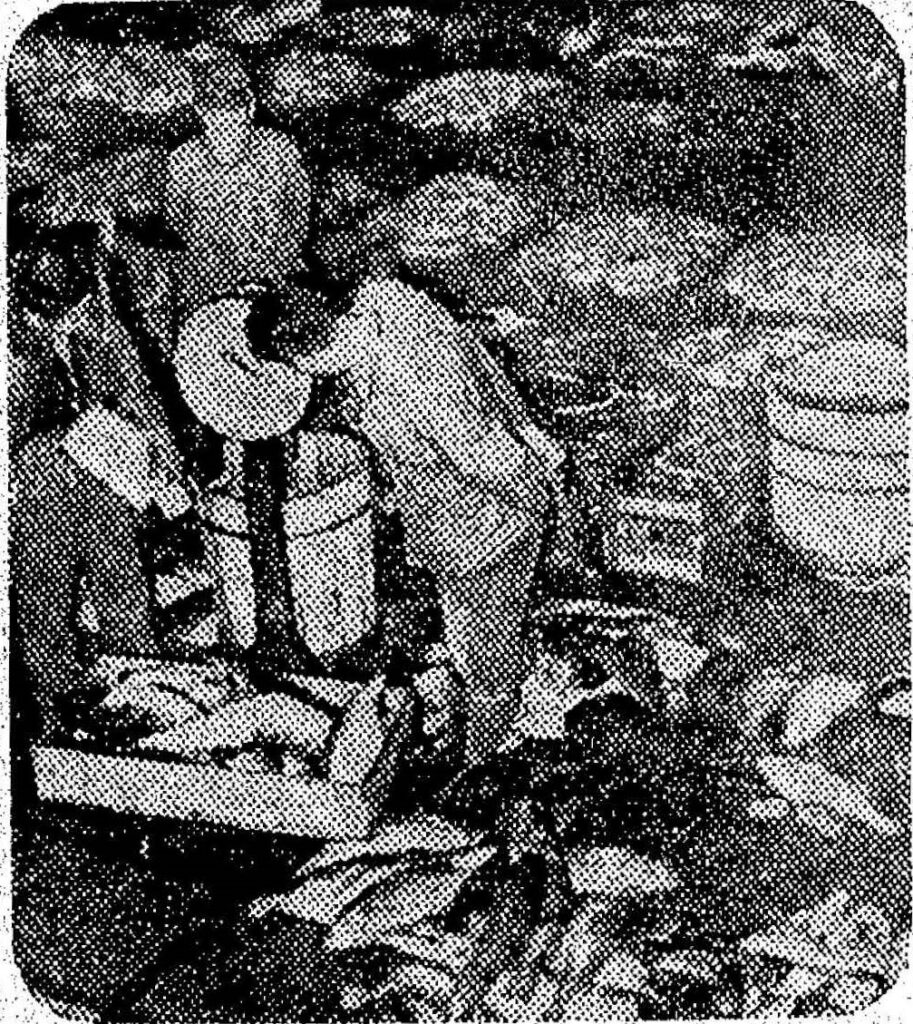
It has been a month since fish supplies were brought under central control to prevent the precious protein source of Seoul’s 1.2 million people’s from flowing into the black markets, which had been a major obstacle in improving the physical condition of city residents on the home front. The problem was supposed to have been completely resolved in this way…
However, the problem of fish shortages has since become a common complaint in the city, with people complaining about the inadequate distribution of fish, and busy housewives screaming about the irregular sales hours of retailers. Let us now figure out what the people of the city have to say about their fish supplies.
Due to the centralized control of incoming and outgoing shipments, all fish and shellfish entering the city of Seoul are now centrally collected. As a temporary measure until a new company is established, the Fresh Fish Department of the Seoul Central Wholesale Market has taken over as the receiving agency for the fish supplies of Seoul. The daily fish collected at the central market is divided by staff into two separate lines, one for household use and the other for non-household use, and then directly delivered to household kitchens. That was supposed to have completely eradicated the involvement of black markets.
We thought that there was no reason why there would be no fish supplies when they were supposed to be smoothly distributed, so we went to the Seoul Central Market. Just as the freight cars were entering the market, the staff was busy sorting the fish shipments, sweating in the slight chill of the cold air. They were busy breaking down piles of fish from here to there and making small piles one by one. Their work was very long and slow compared to the vigorous and quick fish auctions of the olden days, so much so that we wondered whether the fish was going to spoil. No wonder the small retailers were setting their sales hours later in the day. When we unthinkingly suggested to our tour guide Mr. Murata, the supervisor, “At this rate, all the fish will spoil in the summer,” he frankly affirmed, “That’s right”. Adding that he was taking measures to set up large distribution centers for each region, he also addressed the fish shortages as follows.
First of all, explaining the route of fish shipments from arrival to distribution in earlier times, fish supplies were previously purchased by middlemen and then placed in the hands of waiting small retailers, so they were processed quickly and sold to the public at regular times. In this sense, fish seemed to be available in comparatively abundant supplies, especially since suburbanites and residents of upscale neighborhoods were able to sit back and buy fish, albeit at high prices akin to black market rates, thanks to the presence of fish dealers.
Today, incoming fish and shellfish are divided into household use and non-household use, and the fish and shellfish are sorted by the staff without middlemen. For household use, since greater Seoul is divided into seven regions and further divided into 48 retailing districts, the market has to divide the incoming fish and shellfish into 48 shipments. At this time, even though it would be easy if the incoming fish had to simply be divided into 48 shipments, it is actually important to divide the incoming fish and shellfish into different varieties to account for differences in regional consumption patterns, so it takes time and effort to allocate the fish. Then each regional representative takes their respective shipments and distributes them to the small retailers in their retailing district to be sold.
This is why sales hours have become late or irregular, and fish is now mainly sold in the evening. Therefore, many housewives visit seafood stores and find that fish is always unavailable, because they always miss those late sales hours. In addition, some people blame the inappropriate allocation of fish on the fact that the fish middlemen have been abolished and the staff is now made up of people who are ignorant of the fish business. However, when multiple shipments of one fish species arrive, sometimes the fish is diverted to households, even if they were meant to be received by restaurants. In the initial days, a large quantity of fugu (toxic puffer fish) arrived in the market, so some of them were diverted to be sold for household use, and housewives in general had trouble cooking them, which was criticized, but it would be nice to be able to eat any kind of fish during wartime.
As he earnestly talked, I asked him the following question: “It seems that there are areas where fish is abundant and areas where fish is scarce, especially in the suburbs?”
The reason for this is that the allocation of fish shipments to the district representatives is made in consideration of past consumption patterns. There has been high fish consumption in the city center due to the rush of buyers from the suburbs, while the suburbs have mainly been serviced by fish dealers and a few fish retailers, so the fish market is concentrated in the city center. In fact, there are many more people from the suburbs than from the city who buy fish at the 22 markets and department stores in Seoul. However, if we immediately increase the fish quota for the suburbs, that may cause more fish to spoil. To address this issue, we plan to establish a registration system that will link consumers and retailers, which will then be used to distribute and ration the fish supplies.
Now that we had a better idea of how fish supplies were distributed, we asked him why they had decided on selling less than 200 momme (750 grams) of fish per customer at the small fish retailers. He replied that they were certain that 60% of the planned daily fish shipments of 45,000 kan (168,750 kg) arriving at the central market would be consumed by 200,000 households in Seoul, and they came up with this number by dividing the daily fish shipment weight by the number of households. Since fish and shellfish are living organisms that change depending on the fishing conditions in the area where they are shipped, supplies are sometimes very low and often uneven, so consumers should be well aware of this point.
We are hearing that some small retailers are diverting fish supplies to restaurants, and some stores are even avoiding paying duties. The quantities of each fish variety arriving that day are supposed to be clearly posted at the store, so inspectors from the market are doing patrols and rescinding retail permits from fraudulent vendors without delay. In addition, there is a law that allows for special delivery of fish directly from the market to volunteer soldiers and conscripts who need to receive one fish to celebrate their departure for military service, as long as they bring a certificate from the town council through the head of the patriotic group. The Seoul government is taking all possible measures to secure fish for household use.
In short, the consumers are trying to eat a little more than their neighbors by buying up fish supplies at retailer A and then moving onto retailer B, which is the cause of supply shortages and disruptions to the rationing system. Therefore, Mr. Senda, Director of the General Affairs Department of Seoul, exhorts the fighting people of Seoul to reflect more on their own dietary habits, which are more than adequate, before lodging complaints about irregularities in fish distribution.
Rabbit Hunting by Yongsan Middle School (Sosa)
At 7:00 a.m. on December 16th, all the students of Yongsan Middle School in Seoul gathered in front of Sosa Station to hunt for rabbits in the mountains behind the [illegible] areas.
Source: https://www.archive.org/details/kjnp-1943-12-17
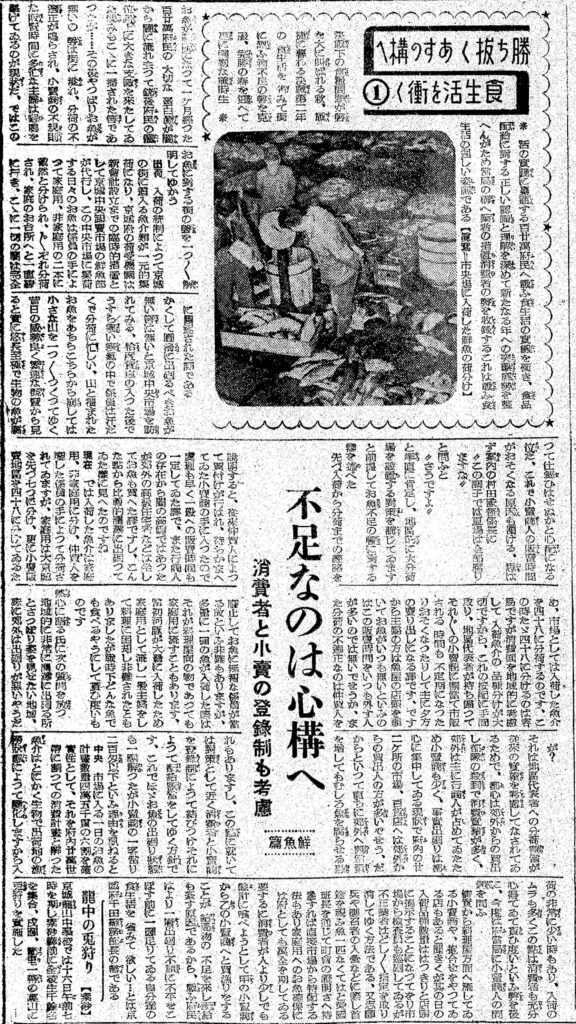
(Transcription)
京城日報 1943年12月17日
不足なのは心構え 鮮魚篇
消費者と小売の登録制も考慮
勝ち抜くあすの構え
食生活を衝く(1)
決戦下の食糧問題が声を大に叫ばれる秋、戦捷に暮れる決戦第二年の食生活を省みて街に漂う物不足の声を克服。完勝の春を迎えて更に強靭な戦時生活の実践に驀進する百二十万府民へ戦う食生活の実態を衝き、食品配給に対する正しい認識と理解を深めて新たなる年への突撃態勢を整えんがため、当局の構え、業者の措置、消費者の声を収録する。これは戦う食生活の逞しい姿態である。【写真=市央場に入荷した鮮魚の荷分け】
お魚が統制になって一ヶ月経った百二十万府民の大切な蛋白源が闇から闇に流れ去って銃後府民の体位向上に大きな支障を来たしていた悩みもここに一掃された筈であったが...
その後、やっぱりお魚が無いの声は街に溢れ、分荷の不適正が鳴らされ、小売商の不規則な販売時間に多忙な主婦は悲鳴を挙げているのが現状だ。ではお魚に対する街の声を一つ一つ解明してゆこう。
出荷入荷の統制によって京城の街に這入る魚介類が一元的集荷になり、京城府の荷受機関は新会社設立までの臨時的措置として京城中央卸売市場の鮮魚部が代行し、この中央市場に集荷する日々のお魚は係員の手によって家庭用、非家庭用の二本に截然と分けられ、それぞれ分荷され、家庭のお台所へと一直線に行き、ここに一切の闇は完全に駆逐された訳である。
かくして円滑に出回るべきお魚が無い筈は無いと京城中央市場を訪れてみる。恰度貨車の入った後でうすら寒い寒気の中で係員は汗だくで分荷に忙しい。山と積まれたお魚をあちらこちらから崩しては小さな山を一つ一つつくってゆく。昔日の威勢良く迅速な競売から見ると実に悠長至極で生物の魚が腐って仕舞いはせぬかと心配になる位だ。これで小売商人の販売時間がおそくなる原因も頷ける。思わず案内の村田監督係長に、”この調子では夏場は全部腐りますな”と問うと、”そうですよ”と率直に肯定し、地区的に大分荷場を設置する対策を講じていますと前提してお魚不足の声に対する弁を述べた。
先ず入荷から分荷までの経路を説明すると、従来仲買人によって買い付けが行われ、待ちかまえていた小売商の手に入ったので処理も早く、一般への販売時間も一定していた訳で、また行商人の存在から闇の高値ではあったが郊外の高級住宅者などは坐してお魚も買えた訳ですし、こんな点から比較的潤沢に出回っていた様に見えたのですね。
現在では入荷した魚介は家庭用、非家庭用に分け、仲買人を廃した係員の手によって分荷されていますが、家庭用は大京城を先ず七つに分け、更に小売販売地区を四十八に分けているため、市場としては入荷した魚介を四十八に分荷するのです。この時ただ四十八に分けるのは容易ですが、消費面を地域的に考慮して入荷魚介の品種分けが大切ですから、これの按配に手間取り、地区代表者が待ち帰ってそれぞれの小売商に割り当て市販される。
時間も不定期になったりおそくなったりして主に夕方の売り出しになる訳です。ですから主婦の方は魚屋の店頭を覗いてお魚がいつも無いというのは、この販売時間をいつも外す人が多いのでは無いでしょうか。また分荷の不適正なのは仲買人を廃止してお魚に無智な係員が当る故という非難もありますが、多重に一種の魚が入荷した際は、それが料理屋向けの物であっても家庭用に流すこともあります。当初河豚が大量に入荷したため家庭用として流し、一般主婦をして料理に困却し非難されたこともありましたが、戦時下どんな魚でも食べるようにして貰い度いものです。
熱心に語る氏に次の質問を放つ。「地域的に潤沢に出回る所とさっぱり姿を見せない地域、殊に郊外は出回りが悪いようだが?」
それは地区代表者への分荷割当が従来の実績を考慮してなされているためで、都心は郊外からの買出し部隊の殺到で消費実績が多く、郊外は主に行商人が占めていたため、小売商も少なく、事実出回りは都心に集中している現状で、府内の二十二ヶ所の市場、百貨店へは郊外からの買出し人の方が多いでしょう。だからといって直ちに郊外へ割当量を増してもむしろ魚を腐らせる恐れもありますし、この点に就いては対策として近く消費者と小売商を登録制によって結びつけ、それによって配給割当をしてゆく方針です。
これで、ほぼお魚の出回り状態も一応解ったが、小売商の一客当り二百匁以下という理由を訊ねると、中央市場に入る一日のお魚の計画数量四万五千貫の六割を確実性として、それを府内二十万世帯に割っての消費計画と解った。魚介は、とにかく生物で出荷地の漁労状態によって変化しますから、入荷の非常に少ない時もあり、入荷のムラも多くこの点は消費者も充分心得ていて貰い度いという声を後に、今度は府当局に小売商人の問題を問う。
情実から料理屋方面へ流している小売商や、抱合わせをやっている店もあると聞くが、其の日の入荷品種数量は、はっきりと店頭に掲示することになっており、市場から検査員も巡回しているが、不正業者はどしどし指定を取り消してゆく方法である。又志願兵や応召者の入営などに際し首途を祝う魚一匹なくてはと愛国班長を通じて町会の証明さえ持参すれば直接市場から特配する法もあり、家庭用へのお魚確保には府としても万全を期している。
要するに消費者が人より少しでも余計に食べようとして、甲の小売商から乙の小売商へと買い漁りをすることが結局物の不足を来し、配給も紊す原因であるから、戦う府民はより一層出回り不順に不平をこぼす前に一応足りている自分達の食生活を省みて欲しい、とは京城府千田総務部長の弁である。
龍中の兎狩り 【素砂】
京城龍山中学校では十六日午前七時を期し素砂駅前に全校生千余名を集合。戍応、?里一帯の裏山に兎狩りを実施した。

